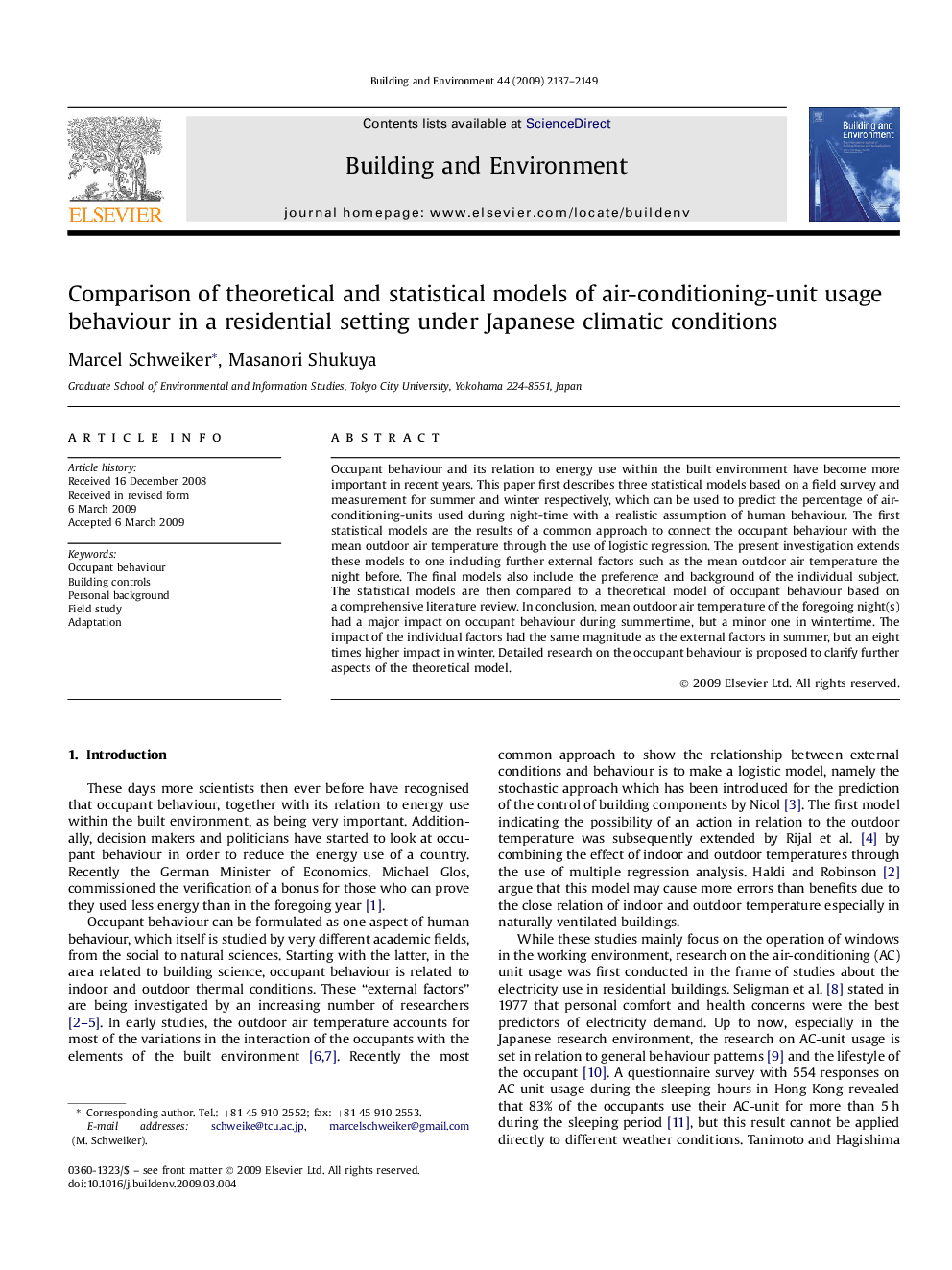| Article ID | Journal | Published Year | Pages | File Type |
|---|---|---|---|---|
| 249662 | Building and Environment | 2009 | 13 Pages |
Occupant behaviour and its relation to energy use within the built environment have become more important in recent years. This paper first describes three statistical models based on a field survey and measurement for summer and winter respectively, which can be used to predict the percentage of air-conditioning-units used during night-time with a realistic assumption of human behaviour. The first statistical models are the results of a common approach to connect the occupant behaviour with the mean outdoor air temperature through the use of logistic regression. The present investigation extends these models to one including further external factors such as the mean outdoor air temperature the night before. The final models also include the preference and background of the individual subject. The statistical models are then compared to a theoretical model of occupant behaviour based on a comprehensive literature review. In conclusion, mean outdoor air temperature of the foregoing night(s) had a major impact on occupant behaviour during summertime, but a minor one in wintertime. The impact of the individual factors had the same magnitude as the external factors in summer, but an eight times higher impact in winter. Detailed research on the occupant behaviour is proposed to clarify further aspects of the theoretical model.
